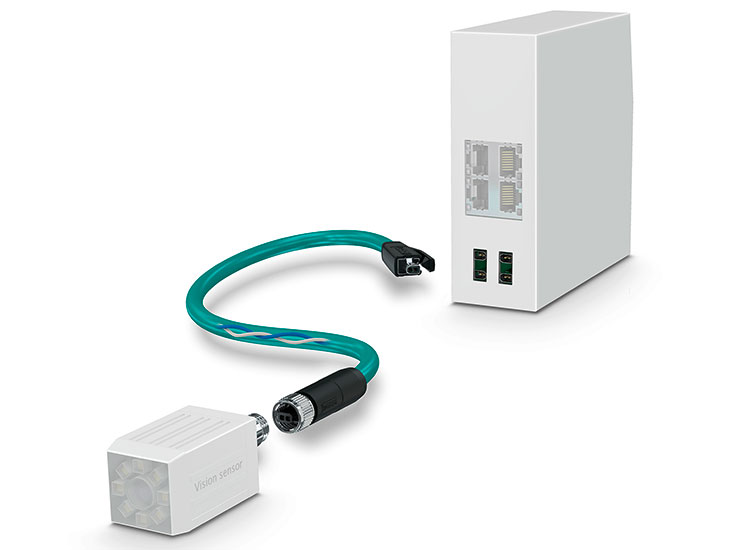The new Single Pair Ethernet (SPE) connector system from Phoenix Contact can lower applied costs and help future-proof networks. As engineers design smarter machines, buildings, and factories, SPE will be a key technology in an Industrial Internet of Things (IIoT) ecosystem. The first available products include IP20 and IP67 PCB-mount device and panel feed-through connectors, along with patch cables. The IP67 products are designed to the popular M8 connector style.
 SPE requires only two wires, rather than the four or eight wires used in traditional 2-pair or 4-pair Ethernet. The new technology transmits data and power in both directions through one twisted pair of cables using Power over Data Line (PoDL). This reduces the size, weight, and installation time without sacrificing performance.
SPE requires only two wires, rather than the four or eight wires used in traditional 2-pair or 4-pair Ethernet. The new technology transmits data and power in both directions through one twisted pair of cables using Power over Data Line (PoDL). This reduces the size, weight, and installation time without sacrificing performance.
Because the SPE connector profile is 50% smaller than an RJ45 connector, it is easy to integrate into devices and simplify circuit layouts. SPE can achieve Ethernet transmission up to 1 Gbps or up to 1,000 m. The same twisted pair can also transmit up to 50 W of power, so it can be used in a broad range of applications.
Phoenix Contact is a founding member of the Single Pair Ethernet System Alliance. This alliance of leading technology companies aims to promote the use of SPE technology in industry and establish uniform standards. The SPE connectors meet IEC 63171-2 and -5 standards. The Phoenix Contact connectors are designed to be the most efficient and space-saving SPE system available.
Phoenix Contact
www.phoenixcontact.com/SPE

